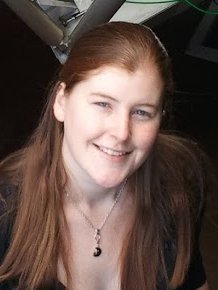Profile
Biography
I am a Senior Lecturer in the School of Physics, Engineering and Technology specialising especially in Astrophysics. I am the Director of Astrocampus - a teaching and outreach observatory at the University of York. My research interests include the spectroscopy of pulsating stars and higher education in physics and astrophysics. I am the current Year 3 Tutor, Head of Student Liaison in the School and I coordinate the staff-student committee.
Career
- Postgraduate Certificate in Academic Practice, University of York, UK
- PhD 'The Music of the Stars', University of Canterbury, Christchurch, New Zealand
- Grad. Dip. Tch. (Sec) Bethlehem Tertiary Institute, Tauranga, New Zealand
- BSc (Hons) University of Canterbury, Christchurch, New Zealand
Roles in the School of Physics, Engineering and Technology
- Astrocampus Director
- Year 3 Tutor
- Head of Student Liaison
Teaching
Undergraduate
- Lecturer for Stage 1 Mapping the Universe module
- Lecturer for Stage 1 Optics module component
- Lab Project Coordinator for Stage 1 Astrophysics
- Lecturer for Planetary Science module component
- Lecturer for Stage 3 Radio and Infrared Astronomy module
- Laboratory supervisor for Astrophysics in Stage 3 Advanced Astrophysical Laboratory
Learning and Teaching Philosophy
My enthusiasm for education roots from a personal value that the process of knowledge acquisition and development is a social and co-operative activity. This philosophy has motivated my academic and educational work to share my passion of physics and astronomy. I subscribe to an individual-centred view of learning where positive relationships are key in developing successful teaching and learning strategies, including the engagement of students. I support the use of technology to enhance the delivery and interactive nature of learning whilst maintaining a human perspective. I approach physics as an interactive and interdisciplinary subject grounded in our everyday experiences and with possibilities beyond our own current comprehension.
Other teaching
Example Final Year Projects
- 'The Sky is Falling' - Studies of Meteors using long exposure photography – BSc
- 'Observing Variable Stars using a Remote Observatory' - Using a remote telescope in Spain to observe variable stars– BSc
- 'Song of a Star' - The spectroscopic analysis of a γ Doradus star -MPhys (This project can involve primary data collection from a research telescope in New Zealand)
- 'Classifying Stellar Pulsations From Space' - using the Keplerspacecraft data to investigate frequencies in variable stars -MPhys
- 'Planet Hunting- Pushing Telescopes to the limit' - observing planetary transits with small telescopes. -MPhys
Research Student Opportunities
I offer self-funded Masters by Research (MScR) projects in asteroseismology. Please enquire for further details.
Research
Overview
Summary of Expertise
- Asteroseismology of A-F type stars
- High-resolution spectroscopy of stars
- Astronomy, astrophysics and physics teaching and outreach
Asteroseismology is the study of pulsations in stars. Pulsations occur in most types of stars, in most times of their lives, but one type of pulsation, in some classes of star, offers something special. The pulsations in γ Doradus stars are g-modes, where the restoring force is gravity. The physical origin of the pulsations means the pulsations propagate very deep into the stellar interior, probing the core. The characterisation of the pulsations thus allows us to determine key properties of the stellar interior such as the size of the core and the interior density. The g-modes in γ Doradus stars not only probe the depths of the stars, but they also provide information on the evolution of stars which are born just a bit more massive and hotter than the Sun.
To achieve measurements of all the above, massive efforts have been made from the ground and from space. Observations are made in one of two ways-from measurements of the changing amount of light emitted from the star (photometry) and from studying the Doppler shifts in the light (spectroscopy). My research focuses primarily on the latter involving hundreds of nights of time on a variety of international telescopes to characterise the pulsations of A-F type stars.
External activities
Memberships
Director of Astrocampus
Astrocampus is a hub for astronomy teaching and outreach at the University of York. The observatory houses multiple optical, solar and radio telescopes and related equipment used for teaching in the undergraduate programme. Astrocampus is open to the public and schools through organised events. For more information on the outreach aspects of the site please see Astrocampus. For more technical information see an overview of our facilities.
For regular updates on local and international astronomy news - follow @astrocampus on twitter.
Public Lectures
I strive to promote science in the community as a social and positive activity. Towards this, I regularly give public lectures on a variety of topics. Some examples of past titles include:
Syzygy - An Astronomy Podcast
Syzygy is about the latest breakthroughs in astronomy- what is out there, how we know about it and what it really means. No prior astronomy knowledge required!
We discuss topics such as planets in other galaxies, dark matter and how to find out about the interiors of stars.
You can see our syzygy website or on iTunes.

